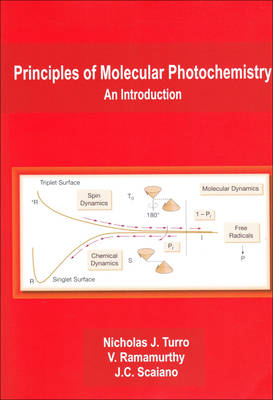
- Afhalen na 1 uur in een winkel met voorraad
- Gratis thuislevering in België vanaf € 30
- Ruim aanbod met 7 miljoen producten
- Afhalen na 1 uur in een winkel met voorraad
- Gratis thuislevering in België vanaf € 30
- Ruim aanbod met 7 miljoen producten
Zoeken
Principles of Molecular Photochemistry
An Introduction
Nicholas J Turro, V Ramamurthy, J C Scaiano
Paperback | Engels
€ 118,95
+ 237 punten
Omschrijving
Principles of Molecular Photochemistry: An Introduction develops photochemical and photophysical concepts from a small set of familiar principles.
Principles of Molecular Photochemistry: An Introduction develops photochemical and photophysical concepts from a small set of familiar principles. Developed from Nick Turro's best-selling text for three decades - Modern Molecular Photochemistry - this updated primer introduces an initial paradigm that relates the photon and a reactant molecular structure to photochemistry through the structure and dynamics of electronically excited states, reactive intermediates and products. The same paradigm is readily adapted to incorporate the photon and a reactant molecular structure to photophysics. The book provides brilliantly clear descriptions in pictorial terms that can be readily understood by the student and applied to systems of interest. This text will be of interest to not only practicing photochemists and their students, but also to biological scientists, polymer scientists, material scientists and nanoscientists who use photochemistry and photophysics in their research and teaching. For adopting professors, an art CD of figures from the book is also available.
Principles of Molecular Photochemistry: An Introduction develops photochemical and photophysical concepts from a small set of familiar principles. Developed from Nick Turro's best-selling text for three decades - Modern Molecular Photochemistry - this updated primer introduces an initial paradigm that relates the photon and a reactant molecular structure to photochemistry through the structure and dynamics of electronically excited states, reactive intermediates and products. The same paradigm is readily adapted to incorporate the photon and a reactant molecular structure to photophysics. The book provides brilliantly clear descriptions in pictorial terms that can be readily understood by the student and applied to systems of interest. This text will be of interest to not only practicing photochemists and their students, but also to biological scientists, polymer scientists, material scientists and nanoscientists who use photochemistry and photophysics in their research and teaching. For adopting professors, an art CD of figures from the book is also available.
Specificaties
Betrokkenen
- Auteur(s):
- Uitgeverij:
Inhoud
- Aantal bladzijden:
- 518
- Taal:
- Engels
Eigenschappen
- Productcode (EAN):
- 9781891389573
- Verschijningsdatum:
- 16/01/2009
- Uitvoering:
- Paperback
- Formaat:
- Trade paperback (VS)
- Afmetingen:
- 178 mm x 251 mm
- Gewicht:
- 907 g

Alleen bij Standaard Boekhandel
+ 237 punten op je klantenkaart van Standaard Boekhandel
Beoordelingen
We publiceren alleen reviews die voldoen aan de voorwaarden voor reviews. Bekijk onze voorwaarden voor reviews.








